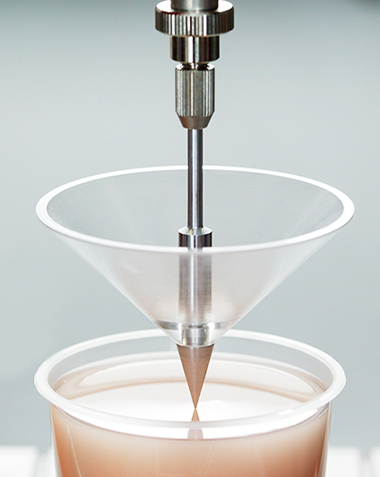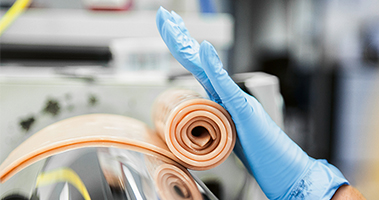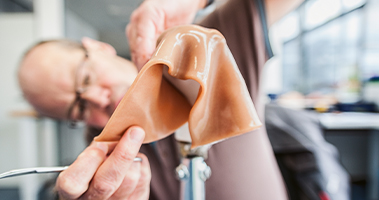Prosthetics
Like a Second Skin
In order to stay mobile, many people are dependent upon orthopedic aids or prostheses. High-performance materials like silicone are what make a perfect fit possible for prostheses, shoe orthotics and bandages, allowing affected individuals to live as normally as possible.
Mobility means life. But many people fail to realize that until movement becomes difficult for them or causes pain. The problems start with what seem like “trivial complaints,” such as tennis elbow or aching feet. In the worst-case scenario, the loss of a body part can mean severe limitations on an individual’s mobility.
There are many different reasons why a person would need an arm or leg prosthesis or an artificial ear. Thanks to modern medicine, however, we can now offset many of these losses, both visually and functionally. Artificial body parts can never replace the real thing. But they can help affected individuals navigate their day-to-day routines and improve their quality of life. Ideally, wearers will not feel their prostheses and those around them will not even notice the difference.
Elemental Building Block for All Silicones
Silicon and oxygen form the backbone of silicones. The same goes for our medical silicone rubber compounds. Their elasticity, purity and ready compatibility mean they are often used in respirators, ventilators and infusion sets. Manufacturers of artificial limbs and orthopedic aids are among those who rely on silicone rubber.
The Closest Possible Resemblance to Human Tissue
In order to maximize the benefit to wearers, today’s prosthesis makers work with the best materials – and that includes silicones. No matter how flexible, firm or robust the material needs to be, manufacturers can turn to WACKER’S comprehensive portfolio of silicones to fine-tune the desired application and properties of the prosthesis. Uses range from cosmetic replacements to hand and partial-foot prostheses. “The replacement should resemble human tissue as much as possible to make it a perfect match for the body – and the wearer should barely feel it at all,” explains Dr. Manuela Beckmann, who worked as WACKER’S global prosthetics coordinator up until last year.
This also applies to cosmetic reconstructions such as breast implants, which need to imitate the way a natural breast feels and moves. These are made by filling a polyurethane envelope with silicone gel, which is then placed in a negative mold, where it cures to the proper shape and size. “To keep the implant from being too heavy, we blend the silicone gels with lightweight fillers like hollow polypropylene beads,” explains Dr. Thomas Gröer, a technical service manager and silicone specialist at WACKER. Tricks like these allow engineers to create imitation breast material that feels more and more like human tissue.

Flexibility, softness and damping properties are essential for an artificial limb to be worn comfortably. Silicones are selectively adjusted to suit this application.

The color of the silicone rubber matches the patient’s own skin. Before the silicone is processed further, it is rolled out to remove any bubbles.

Artificial legs and hands are still made manually. Silicones from WACKER ensure a perfect fit.
A Material You Can Rely On
Silicones are extremely diverse. Depending on the formulation, they can be flexible or insulating, or they can relieve pressure or absorb vibrations. These properties are what make silicone rubber compounds the perfect starting materials for prosthetic liners, which can be pulled over a residual limb like a sock to limit contact pressure and friction. “Silicone liners are the perfect interface between the residual limb and the prosthesis. They absorb pressure and relieve the strain on the tissue,” says Gröer.
“Silicone liners are the perfect interface between the residual limb and the prosthesis. They absorb pressure and relieve the strain on the tissue.”
Dr. Thomas Gröer, Technical Service Manager for Prosthetics
Orthopedic products such as shoe inserts, orthotic devices and toe separators, too, benefit from the flexibility and mechanical properties of silicone. The silicone rubber compounds used most often in orthopedics are those that absorb shocks and vibrations well. Products like these are heat- and cold-resistant, do not age and can withstand any weather. Thanks to silicone, orthopedic aids and prostheses retain long-term functionality, providing patients with years of valuable service.